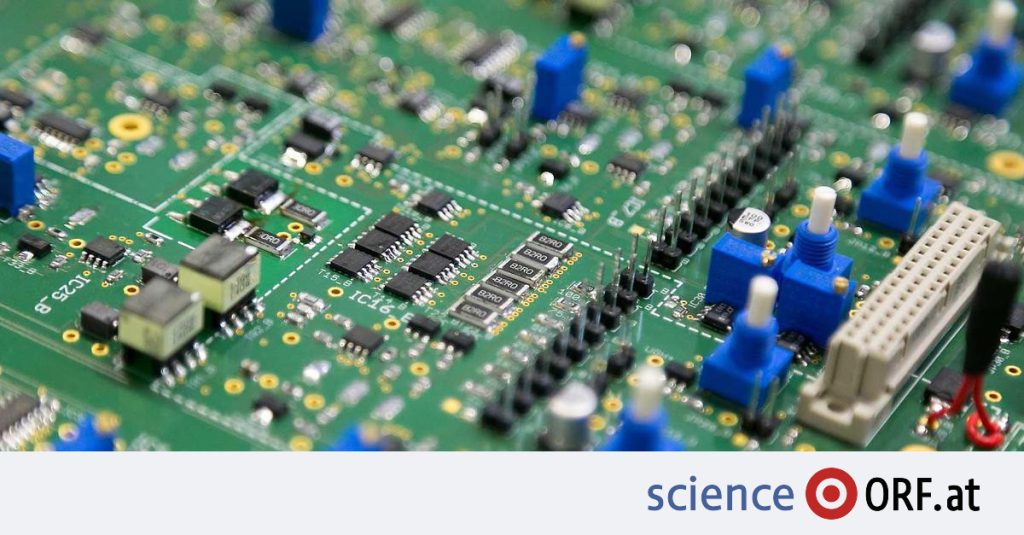The research team led by Martin Schultz, President Institute of Experimental Physics Technical University of Graz, in the journal Nature Communications.
100,000 times faster than current transistors
Computer chips operate with shorter and shorter signals in shorter and shorter periods of time. However, as with miniaturization, the physical limits are eventually reached here as well: the quantum mechanical processes that enable the generation of electric current in a semiconductor material take time. And at some point it can no longer be under the picture.
The team, which also included experts from the Vienna University of Technology, the University of Munich and the Max Planck Institute for Quantum Optics in Garching, has now been able to explore this limit. It is at one petahertz, and therefore it is about 100,000 times faster than current transistors.
In physics, fast means “high frequency” in this case: “The faster you want it to be, the higher the frequency of the electromagnetic signal must be — and at some point we get into the frequency range of light, which can also be used as an electromagnetic signal,” Schultz explained. In optoelectronics, for example, light is used to excite electrons in a semiconductor so that it changes from the isolated state to the conductive state.
Measurements are in the femtosecond range
In their study, the researchers worked with so-called insulating materials such as glass or ceramics. Compared to semiconductors, it requires much more energy to be excited. This allows the use of high-frequency light, enabling faster data transmission. But since insulating materials are destroyed when current flows through them, experts had to keep the switching frequency so short that the material did not have time to break down.
Specifically, they bombarded lithium fluoride, an insulating material, with an extremely short laser pulse with a frequency in the extreme ultraviolet range. This laser pulse excites the electrons in the sample and they can suddenly move freely – the material briefly becomes an electrical conductor. With a second, slightly longer laser pulse, the excited electrons are directed in one direction – current flows, which can be detected. These are processes that happen very quickly, in the attosecond or femtosecond range (an attosecond is one billionth of a billionth of a second, and a femtosecond is one millionth of a billionth of a second).
The technical limit is much lower
Experiments at Garching and Graz as well as theoretical work and computer simulations in Vienna gave scientists answers to questions about how quickly the material reacts to the ultrashort laser pulse, how long it took for the signal to form and how long one has to wait until the next physical signal can be suspended . Co-author Joachim Burgdorfer explains: “This means that the upper limit of the controlled optoelectronic processes is about one petahertz.” Institute of Theoretical Physics from Vienna University of Technology.
Physicists have to disappoint anyone hoping for super-fast gaming PCs: the set limit doesn’t mean that computer chips can be made with a clock frequency just below petahertz, the realistic technical upper bound is probably much lower than that, emphasizing. It remains to be seen if future technologies will make this possible.

“Total coffee aficionado. Travel buff. Music ninja. Bacon nerd. Beeraholic.”








More Stories
Coral Seeding: Artificial Insemination Makes Coral More Heat Tolerant
Fear, Anger, and Denial: How People Respond to Climate Change – Research
LKH Graz: Using radiation to combat heart arrhythmias